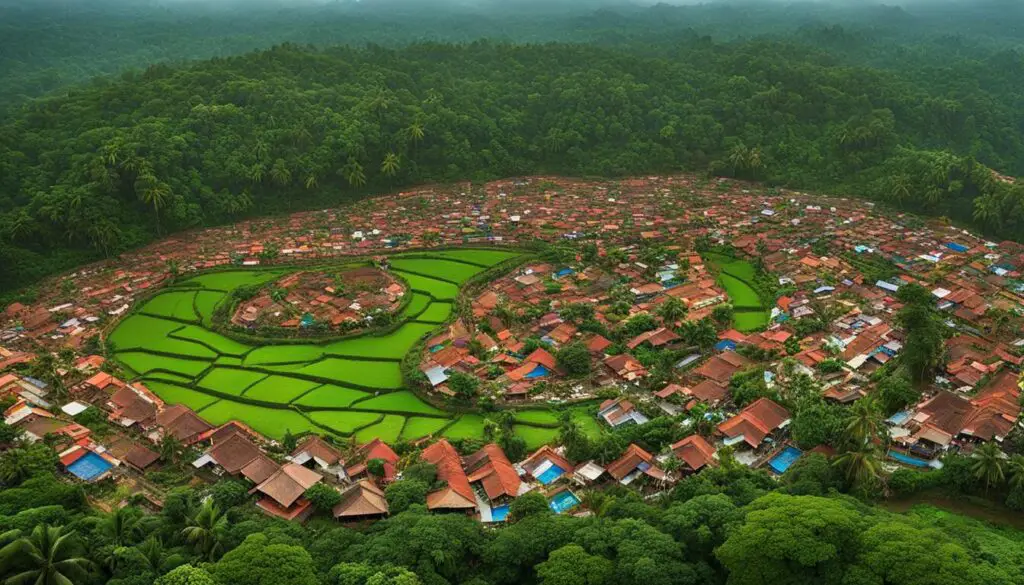Kerala’s political landscape offers a fascinating glimpse into the complexities of democratic politics in India. With a rich history of diverse social and cultural influences, the state is home to a vibrant and dynamic political scene. In this article, we will provide an overview of Kerala’s political parties and offer insights into the unique challenges they face.
One of the notable characteristics of Kerala’s political parties is their engagement with religious bodies and casteist organizations. Even the traditionally left-leaning parties in the state have succumbed to the pressures of religious landlords, shifting their focus towards religio-communal perspectives. This trend has raised concerns about the parties’ commitment to secular values and the promotion of social equality.
The current Communist Party of India (Marxist)-led government has faced criticism for hindering campaigns for gender equality and for its alleged strategies of minority appeasement. On the other hand, the national-level Bharatiya Janata Party (BJP)-led government has been accused of marginalizing religious minorities and restricting media freedom. These challenges highlight the need for political parties in Kerala to actively promote secular values and adopt progressive approaches.
Key Takeaways:
- Kerala’s political parties are increasingly adopting religio-communal perspectives.
- The Communist Party-led government has been accused of hindering campaigns for gender equality.
- The BJP-led government has faced criticism for marginalizing religious minorities.
- Communal polarization is a pressing social issue in Kerala.
- Political parties must actively promote secular values and adopt progressive approaches.
The Unique Phenomenon of Kerala’s “Party Villages”
Kerala, the southern state of India, is renowned for its vibrant political landscape and intriguing social dynamics. One fascinating aspect that sets Kerala apart from other regions is the phenomenon of “party villages.” These villages hold significance due to the sustained political dominance of the Communist Party in the state.
Within these “party villages,” the Communist Party has not only maintained its grip on power but has also adapted to the existing caste structures, despite claiming to challenge them. Caste hierarchies, deeply rooted in Kerala’s social fabric, continue to influence the social structure of these villages. The varying land holdings and resources within different caste groups contribute to the distinct identity of each village.
Hindu religion and caste structures play a significant role in shaping individual identity and social settings within these party villages. The Communist Party, while in power, strategically engages in material and symbolic practices related to the family, economic structure, and political representation. This adaptation demonstrates the challenges faced by revolutionary movements when trying to sustain their ideals while navigating power dynamics within existing caste hierarchies.
Political Allegiance and Caste Structures
The influence of caste structures on political allegiance is evident in the party villages of Kerala. While the Communist Party endeavors to challenge the oppressive caste system, it has internalized and accommodated its dynamics to maintain political hegemony. This blending of revolutionary ideology and caste identity creates unique complexities within the political landscape.
The party villages showcase a fascinating interplay between caste-based power dynamics and political allegiance. The Communist Party consolidates its authority through alliances with dominant castes, thereby strengthening its hold on these villages. The caste-based structures, deeply entrenched in the social fabric, continue to shape political dynamics, making the coexistence of the Communist Party and caste hierarchies a paradoxical phenomenon.
The Challenges of Revolutionary Movements in Power
“The real task is to reach the correct understanding of what the caste system is, to radically change people’s thinking, to develop an inclusive society free from caste hierarchy.” – A local political activist.
The adaptation of the Communist Party to caste hierarchies exposes the challenges faced by revolutionary movements when transitioning from opposition to power. The struggle to balance ideology and practical considerations arises when confronted with existing sociocultural norms and political realities.
Revolutionary movements, like the Communist Party, face the dilemma of maintaining their commitment to social justice while effectively governing within a complex social structure. Kerala’s party villages exemplify this delicate balance as the Communist Party attempts to navigate the inherent contradictions between its revolutionary goals and its political strategy.
Understanding the intricate dynamics of Kerala’s “party villages” provides valuable insights into the complexities of political power, social structures, and the evolving nature of the Communist Party’s ideology within the state.

| Village Name | Party Dominance | Major Caste Group | Land Holdings |
|---|---|---|---|
| Amrithapura | Communist Party (CPM) | Nair | Large land holdings, influential |
| Varakala | Communist Party (CPM) | Ezhava | Medium land holdings, politically active |
| Thrissur | Communist Party (CPM) | Warrier | Small land holdings, educated elite |
| Pattanamthitta | Communist Party (CPM) | Christian | Varied land holdings, diverse community |
Conclusion
The political landscape in Kerala is characterized by a unique blend of religious influence, caste structures, and party politics. However, political parties in the state have faced criticism for their religious appeasement tactics and their failure to address pressing social issues.
A notable aspect of Kerala’s political scenario is the phenomenon of “party villages,” where the Communist Party adapts and coexists with caste hierarchies. This adaptive nature allows the party to maintain its dominance while navigating the intricacies of social structures.
To truly understand Kerala’s socio-political scenario, it is crucial to grasp the intricate dynamics of the state’s political parties. This understanding will shed light on the challenges faced in promoting secular values and progressive approaches in a diverse and complex environment.
FAQ
What factors shape the political landscape in Kerala?
The political landscape in Kerala is shaped by various factors, including the influence of religious bodies and casteist organizations.
How have the Left parties in Kerala succumbed to pressures?
Even the Left parties in Kerala have succumbed to the pressures of religious landlords.
Do political parties in Kerala approach issues from a secular standpoint?
No, political parties in Kerala are increasingly adopting a religio-communal perspective instead of approaching issues from a secular standpoint.
What accusations have been made against the current Communist Party of India (Marxist)-led government?
The current Communist Party of India (Marxist)-led government has been accused of hindering campaigns for gender equality and promoting minority appeasement tactics.
Who else has faced criticisms in Kerala’s political landscape?
The national-level Bharatiya Janata Party (BJP)-led government has also faced criticism for marginalizing religious minorities and limiting media freedom.
What are some pressing social issues in Kerala?
Some of the pressing social issues in Kerala include communal polarization, allegations of love jihad and land jihad, and the need for political parties to actively promote secular values and adopt progressive approaches.
What are the “party villages” in Kerala known for?
“Party villages” in Kerala are known for the Communist Party’s maintained political dominance over the years.
How does the Communist Party adapt to caste hierarchies in these villages?
In these villages, the Communist Party has adapted to the regressive caste hierarchies while claiming to challenge them.
What influences the social structure in Kerala’s “party villages”?
The social structure in Kerala’s “party villages” is influenced by caste groupings, with varying land holdings and resources.
Are Hindu religion and caste structures significant in Kerala’s social settings?
Yes, Hindu religion and caste structures play a significant role in individual identity and social settings in Kerala.
How does the Communist Party maintain its power in Kerala?
The Communist Party maintains its power by engaging in material and symbolic practices related to the family, economic structure, and political representation.
What does the adaptation of the Communist Party to caste hierarchies highlight?
The adaptation of the Communist Party to caste hierarchies highlights the challenges faced by revolutionary movements in sustaining their ideals while in power.
What are the criticisms faced by political parties in Kerala?
Political parties in Kerala have been criticized for their religious appeasement tactics and their failure to address pressing social issues.
Why is it important to understand the dynamics of Kerala’s political parties?
Understanding the intricate dynamics of Kerala’s political parties is essential for comprehending the state’s socio-political scenario and the challenges faced in promoting secular values and progressive approaches.

